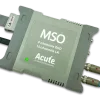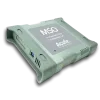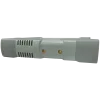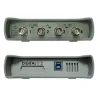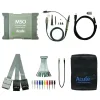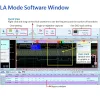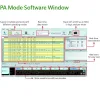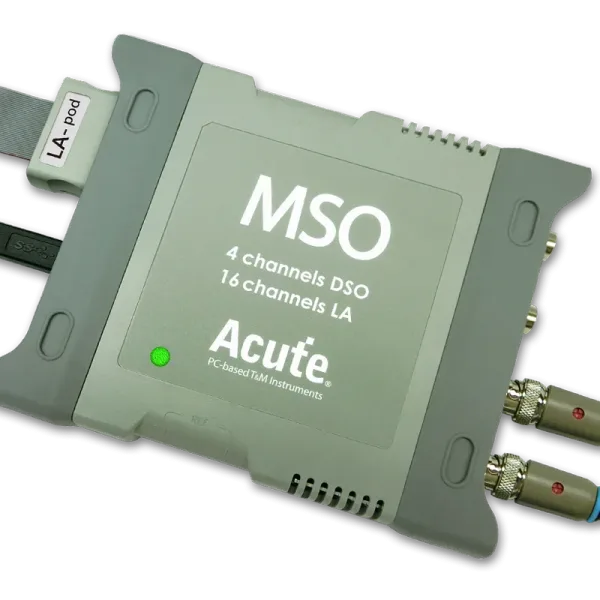
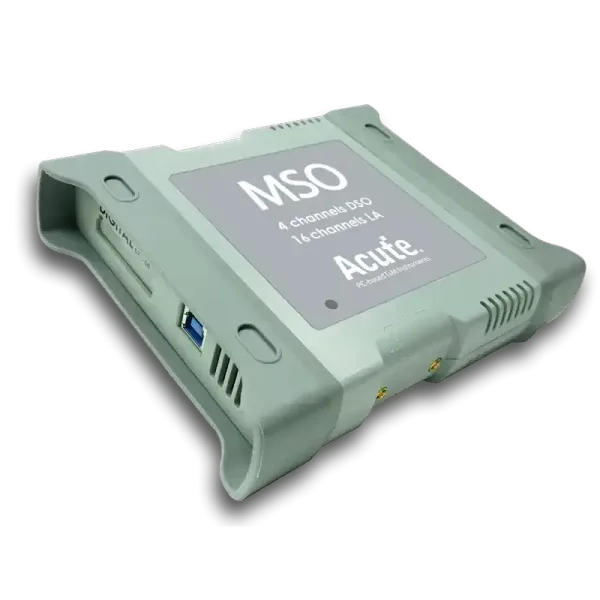
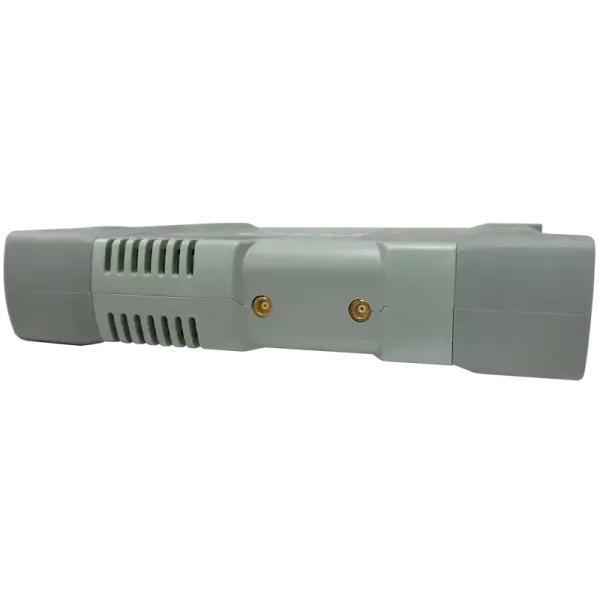
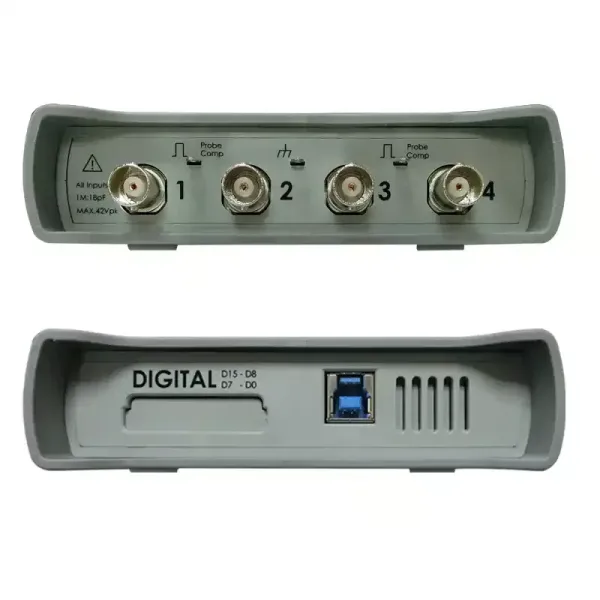
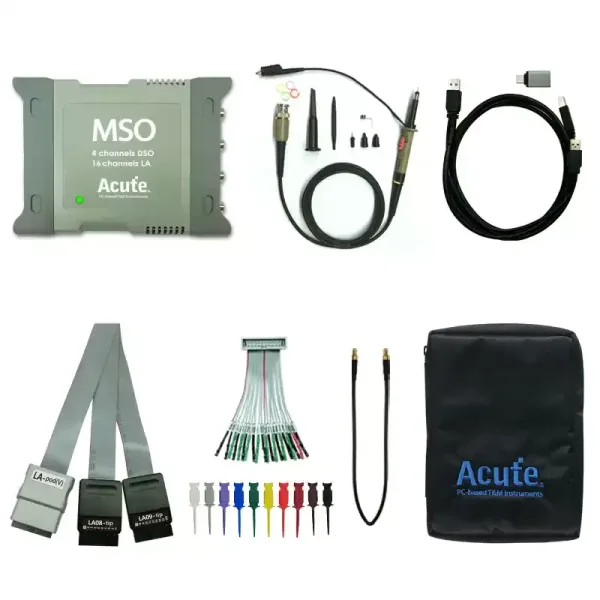
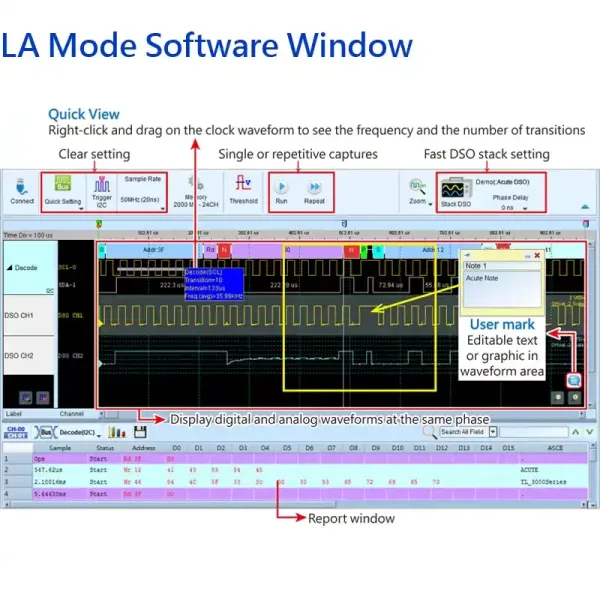
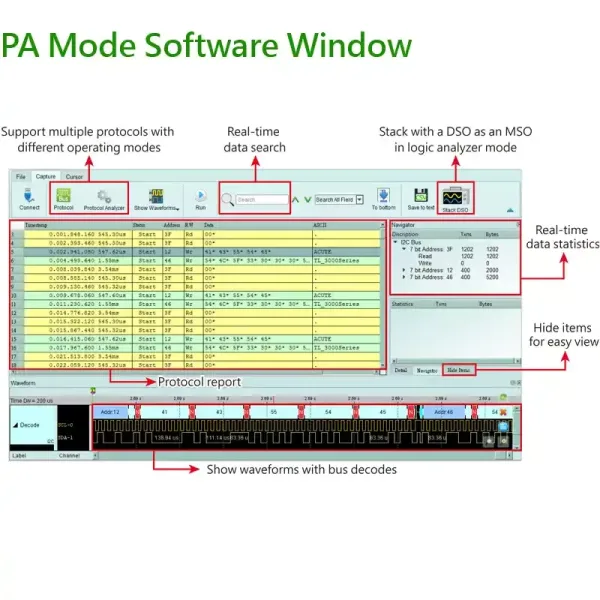
MSO3124H Mixed Signal Oscilloscope
MSO3000 Mixed Signal Oscillosc
6-in-1 Instruments:
DAQ, DSO, DVM, Frequency Counter, Logic Analyzer, Protocol Analyzer
- PC-based, USB3.0 interface / powered (Type-A / Type-C)
- Total Memory:4 Gb
- Data Logger (HDD / SSD Storage)
- DSO:4 Channels, 1 GS/s S/R, 200 MHz bandwidth
- Digital Voltmeter :3 digits
- Frequency Counter:5 digits
- Logic / Protocol Analyzer:16 Channels, 2 GS/s Timing Analysis, 250 MHz State Analysis
MSO3124H is a versatile 6-in-1 instrument that offers oscilloscope, logic analyzer, protocol analyzer, data collector, digital multimeter, and frequency counter functionalities. It can simultaneously measure and display both analog and digital signals. Due to its combination of multiple measurement and analysis capabilities, it is suitable for various application fields, from data collection to waveform analysis, allowing for efficient and accurate tasks.
MSO3124H oscilloscope features 4 channels, a 1 GS/s sampling rate, and a 200 MHz bandwidth, with a record length of 128Mpts for each channel. Additionally, it includes a 3-digit digital multimeter and a 5-digit frequency counter. The MSO3124H not only supports oscilloscope mode but also includes logic analyzer mode and protocol analyzer mode, making it suitable for different signal and bus analysis requirements.
MSO3124H features a 16-bit high resolution and oscilloscope stacking capability, allowing it to capture very subtle signal variations, making it suitable for high-precision measurements and analysis. The oscilloscope stacking function simultaneously displays multiple waveforms, facilitating signal comparison and analysis. This is particularly helpful for comparing waveforms at different time points or from different channels.
DSO Functions:
Multiple Devices Stack Mode
Support DSO stack mode, up to 4 devices (16 channels) can be stacked together in the same time.
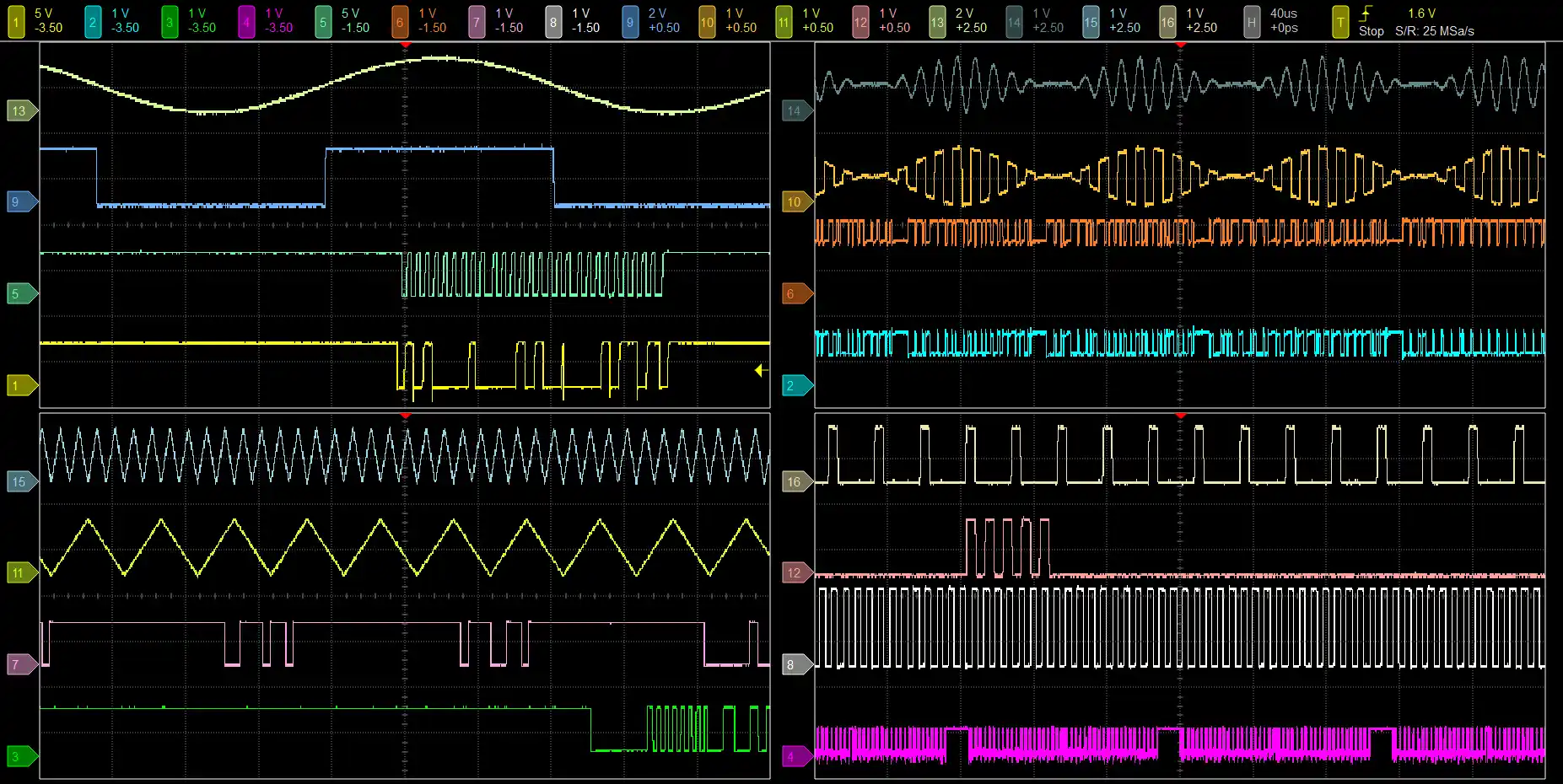
Protocol Analyzer (PA) Mode
It is hardware decoding, may log protocol data very long time if without waveforms. Application timing: Preliminary protocol debug.
MSO Enables Digital & Analog Channels
(Using the same channels)a
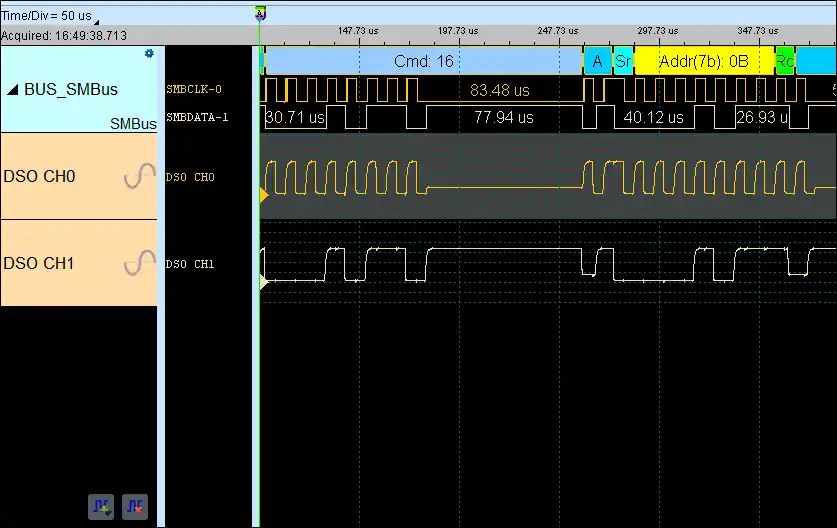
Digital & Analog Signals From MSO and External DSO From Other Vendors
*[1]: Decode & Digital Signals;*[2]: MSO Analog Signals;*[3]: External DSO Signals
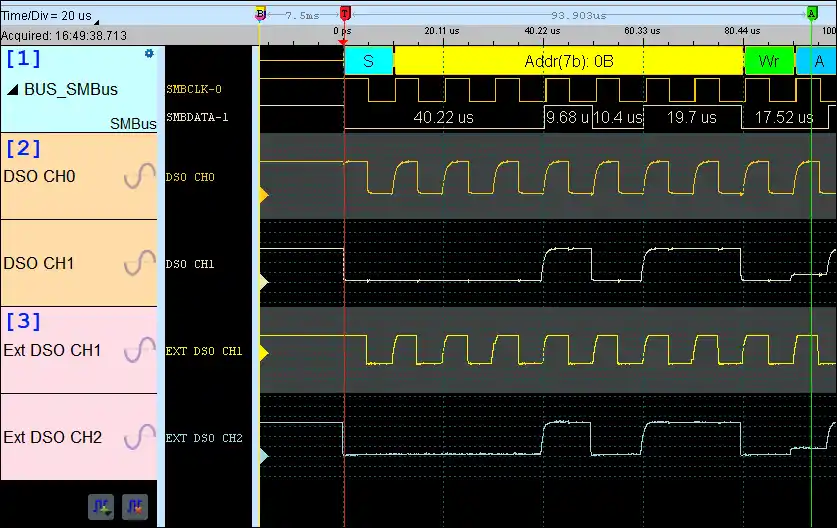
Stack With Other Vendors of Oscilloscope
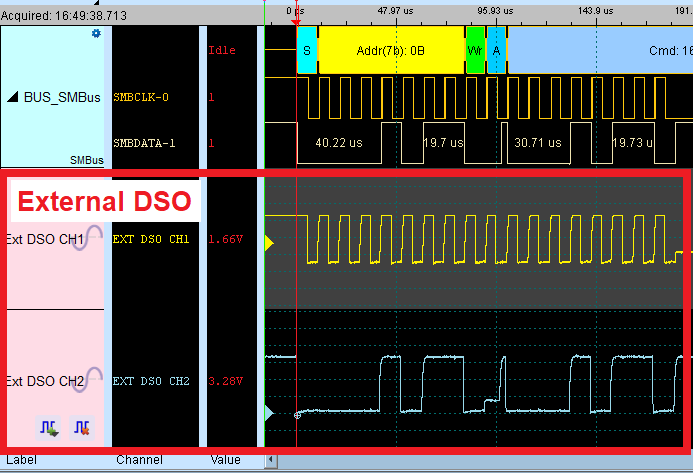
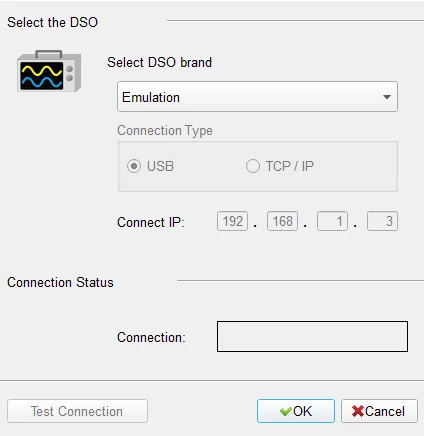
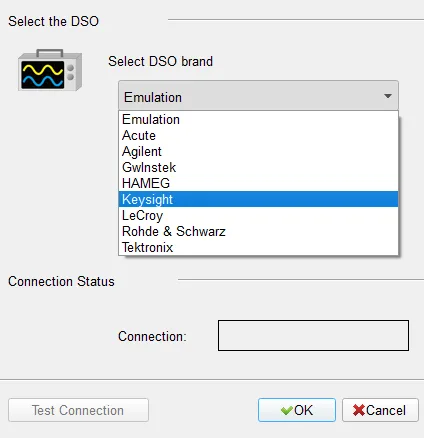
Flow chart bus triggers
Power trigger for serial bus, 8-states flow chart setting with Counter/Timer
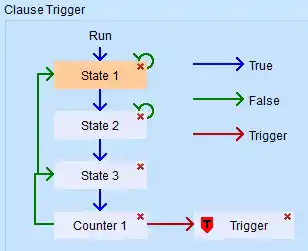
Detail parameters for each states
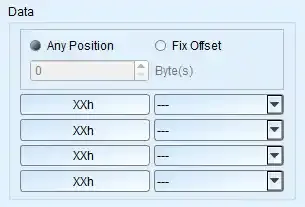
Analog waveform
Input Sensitivity: 2mV/div to 10V/div; Max. Sampling Rate: 1GS/s @ 1Ch
Can be used with High Voltage probe, Differential probe or Current probe.
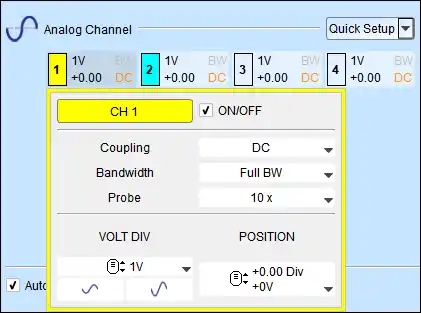
Digital waveform
Operation Range: ±30V
Max. Timing Analysis: 2GS/s @ 8Ch
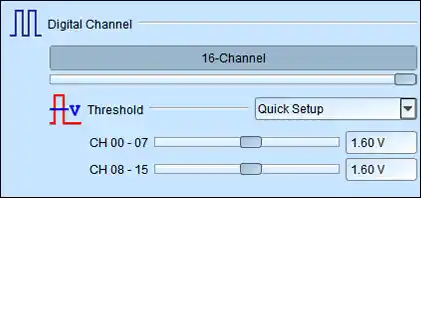
Logic Analyzer (LA) Mode
- Capture digital waveforms and support bus decodes. Able to stack with a DSO to form as an MSO.
- Provides multiple storage modes, users could select to have long time recording or precision acquisition.

- Long Time Record: Transitional Storage VS Compressed Storage
For signal capture and analysis, usually require to record the signal for a long time. If the data is stored in a compressed way, it will cause your software to lag or even stop functioning when decompressing the data after it is sent back to the computer. Because PC memory size might insufficient for decompressed data size. To satisfy the requirement of smooth software operation and long-term recording without missing any data, the storage method adopted by the Acute analyzer is transitional storage rather than compression. After returning to the PC software, it doesn”t need to do the decompression. The decoded results can be displayed while the analysis is finished.
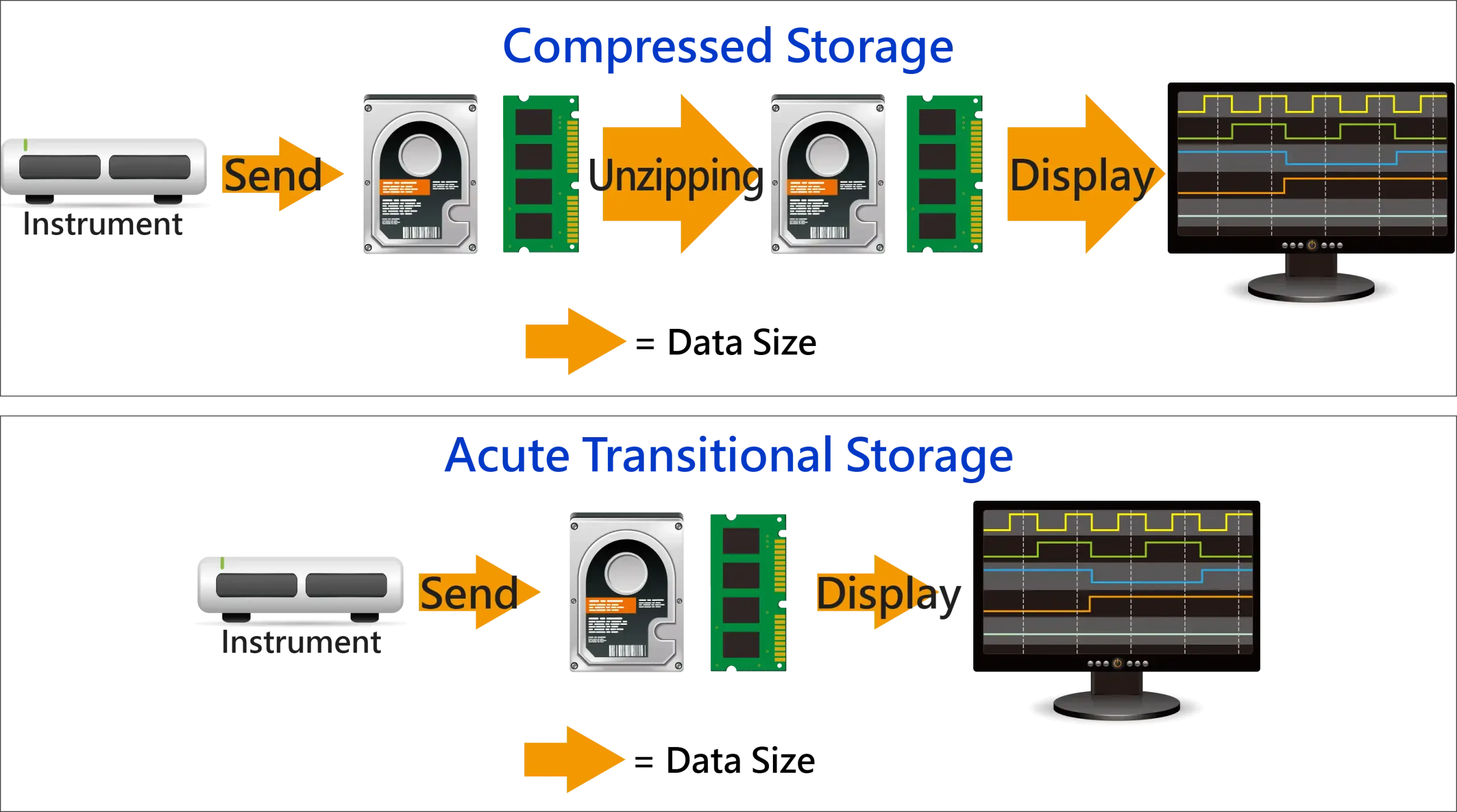
Measurement
More than 20 types of waveform measurements with customized threshold settings features, provides real-time update for vertical, time and channel to channel timing measurements with statistic features.
- Time:Frequency, Period, ±Duty, ±Period, Rise/Fall Time, Delay, Phase
- Vertical:VMax, VMin, VHigh, VLow, Vpp, VAmp, VMid, VMean, VRMS, ±Overshoot, Rise/Fall Preshoot
- Counter:Edge Count, ±Pulse Count
- Math:Add, Subtract, Multiple, Divide, XY, Absolute, Square Root, LogA, LnA, Exponential, Integral
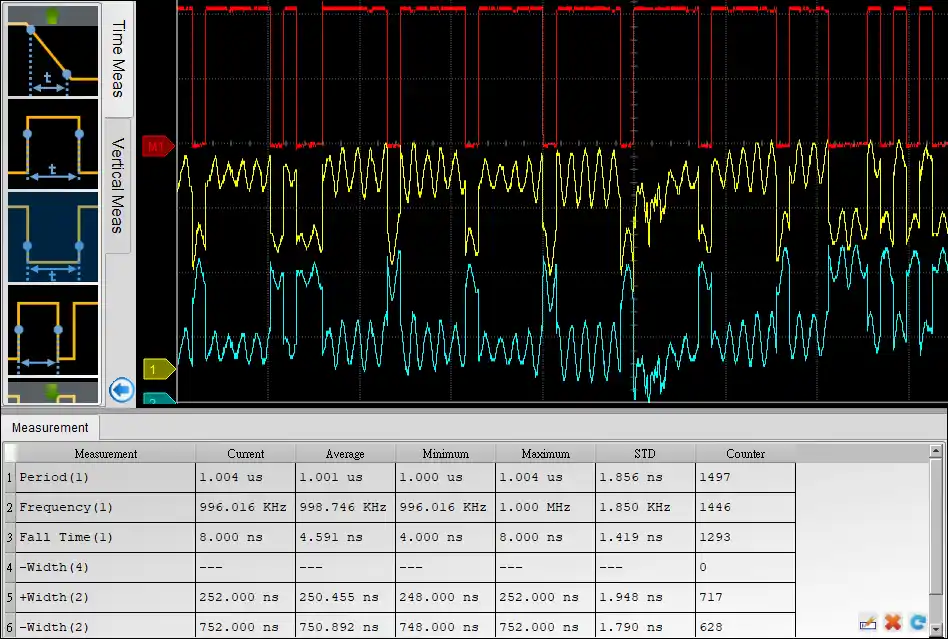
Digital Voltmeter, DVM
Provides voltage root-mean-square, voltage average and frequency counter function for the selected channel.
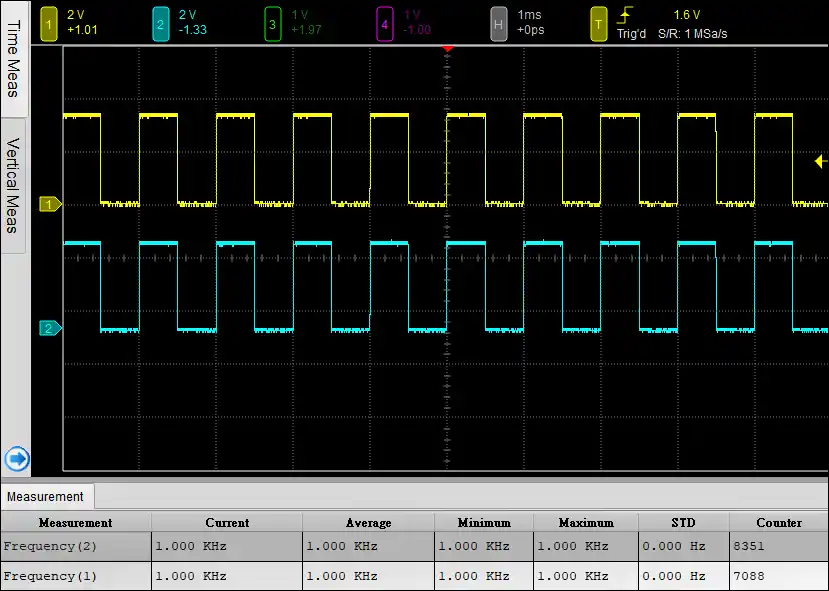
Measure 1 KHz, 2.5 Vpp square waveforms by the measurement function.
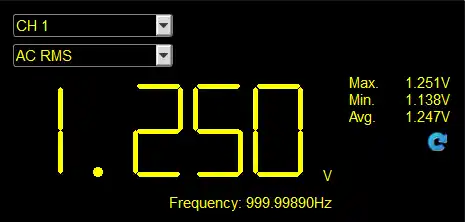
Measure 1 KHz, 2.5 Vpp square waveforms by the DVM function.
Vertical Offset & Zone View
Voltage division from 2mV/Div – 10V/Div combined with the channel independent Vertical Offset settings, which can be used for glitch measurement and analysis on DC power, and observing the ripple and overshooting voltage on DC offseted voltage. It is also possible to use 16Bit high vertical resolution mode (TS3124H/V) with the Zone View feature to observe the DC voltage and ripple signal together in the same time.
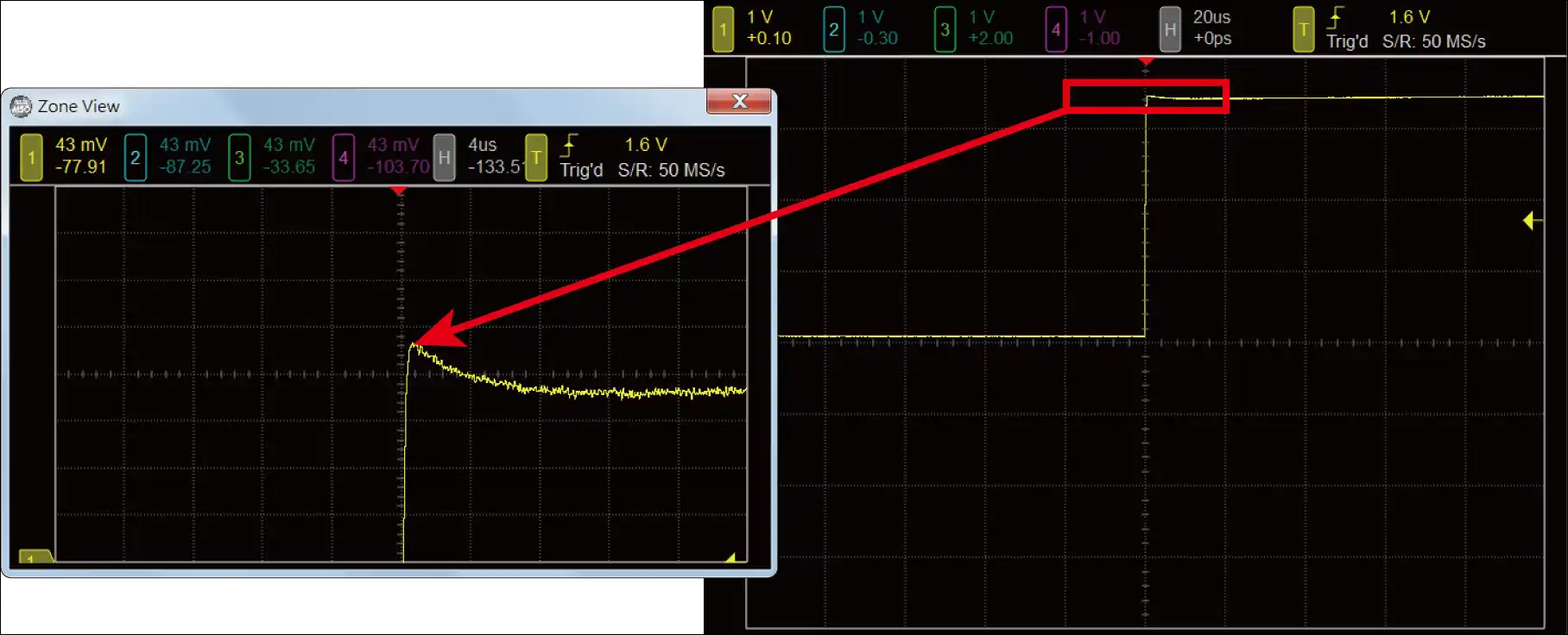
Multiple Windows
Multiple Window feature provides 4 display types (1×1, 2×1, 1×2, 2×2), which could displays 16 channels in maximum 4 different windows, provides clear waveform readability without lower the vertical resolution.
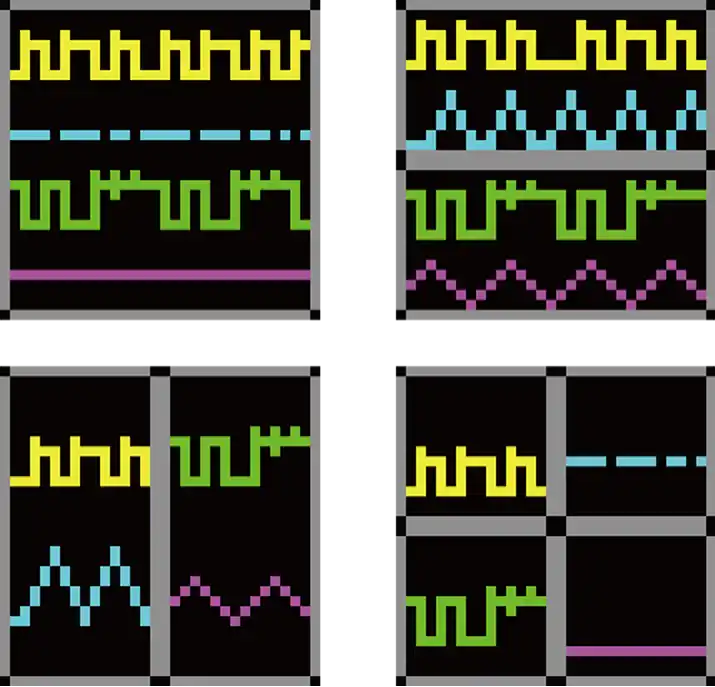
Spectrum analysis (Fast Fourier transform, FFT)
Apply FFT to the selected channel.
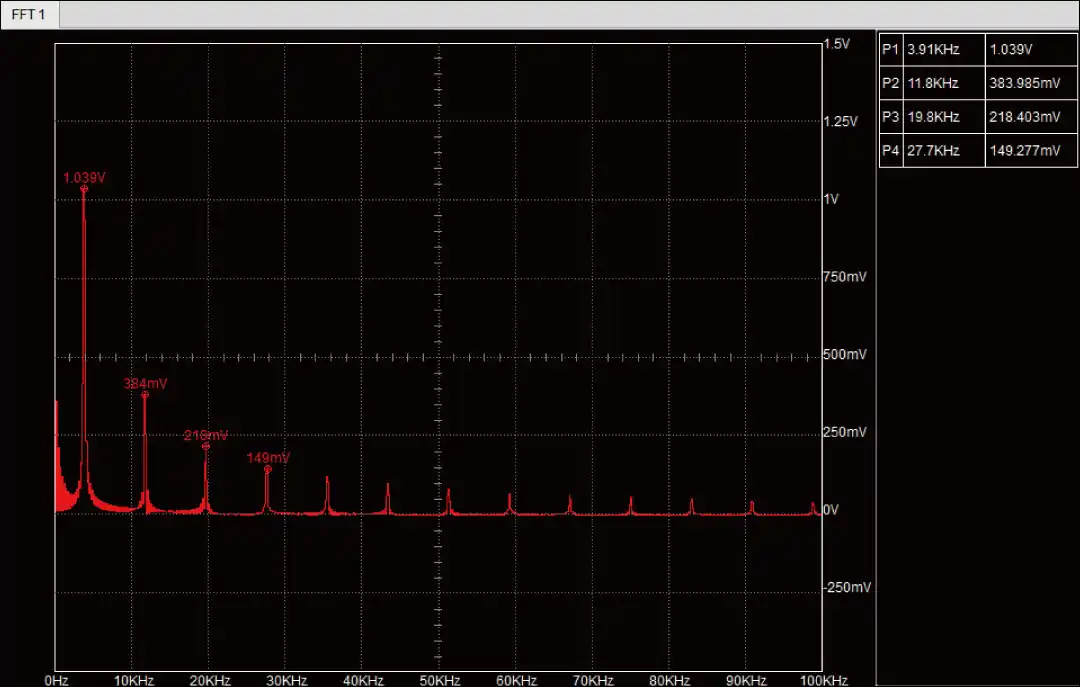
Runt Trigger – Positive Runt
Use 2 voltage thresholds and pulse width to trigger on either/ ±runt signals.
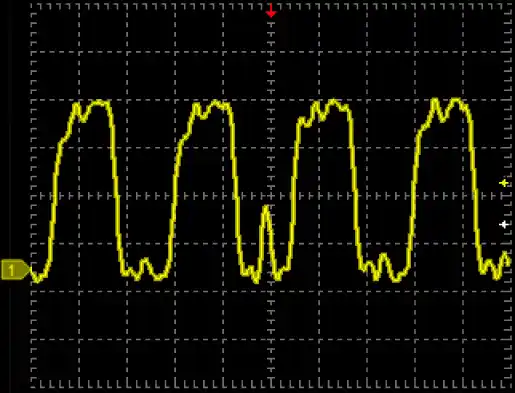
Runt Trigger – Negative Runt
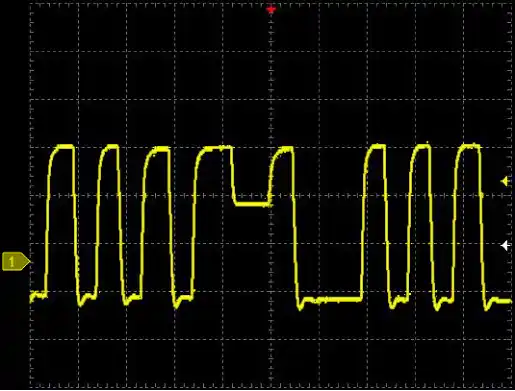
Timeout Trigger
Trigger when no pulse is detected within a specified time, range from 2ns to 50s.
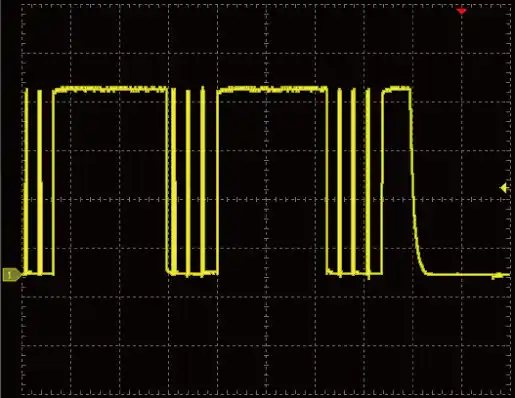
Width Trigger
Pulse width range from 8ns to 50s.
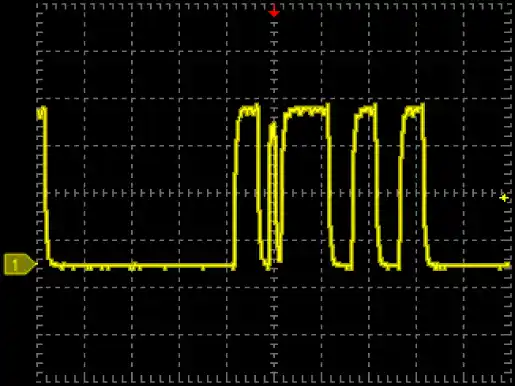
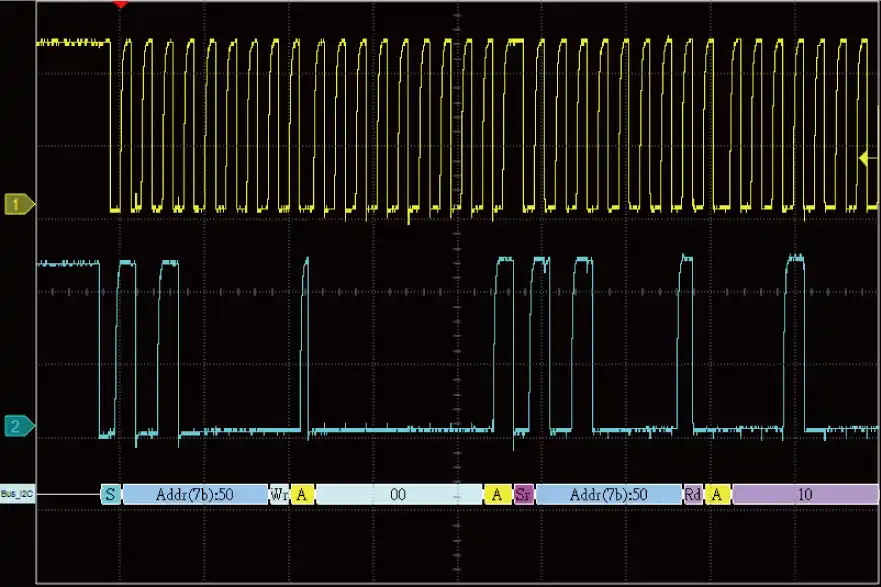
Decode the I2C waveforms
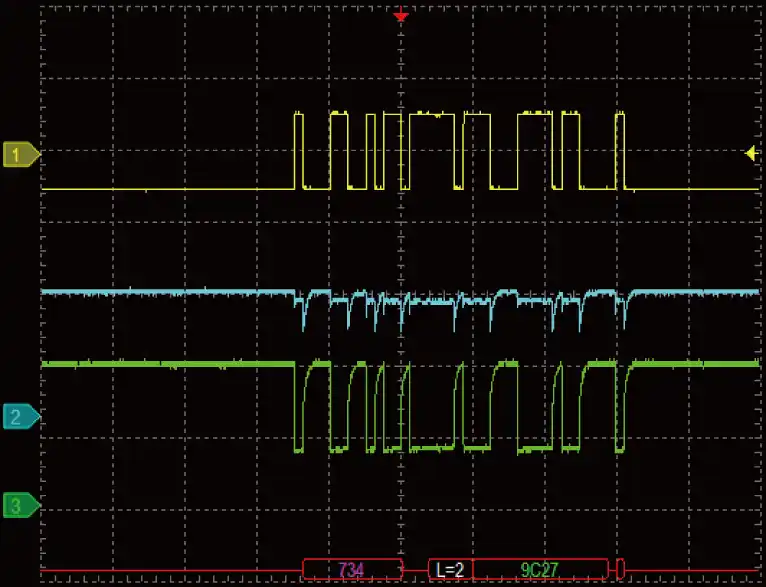
Decode the differential CAN signals with a differential probe. (CH1: Differential Probe, CH2: CAN H, CH3: CAN L)
※ Supports CAN-FD, CAN2.0
Protocol Analyzer
Show real-time protocol data. Application timing: massive protocol data with some idles in between.

Protocol Logger
Like data logger, save massive data into SSD hard drive. Application timing: massive protocol data.

Protocol Monitor
Like dash cameras, record protocol data by the device’s memory only. Application timing: trigger event only happens in very long time.

| DSO Spec. | |
|---|---|
| Power source | USB bus-power (+5V) |
| Static power consumption | 4.5W |
| Max power consumption | 7.7W |
| Acquisition Mode | Sample, Average, Envelope[*], Peak detect[*], High resolution |
| 8 bits Sampling [Record length] | 1 Ch @ 1 GS/s [512 Mpts]; 2 Ch @ 500 MS/s [256 Mpts]; 4 Ch @ 250 MS/s [128 Mpts] |
| ≧12 bits Sampling [Record length] | 1 Ch @ 500 MS/s [512 Mpts]; 2 Ch @ 250 MS/s [256 Mpts]; 4 Ch @ 125 MS/s [64 Mpts] |
| ≧14 bits Sampling [Record length] | 1 Ch @ 100 MS/s [256 Mpts]; 2 Ch @ 100 MS/s [128 Mpts]; 4 Ch @ 100 MS/s [64 Mpts] |
| Input channels | 4 |
| Input coupling | AC/DC |
| Input impedance | 1 MΩ ∥ <19 pF |
| Overvoltage protection | ± 100 V (DC+AC peak) |
| Ch-Ch isolation | 50dB @ DC to 100MHz; 40dB @ 100MHz to 200MHz |
| Ch-Ch skew | 100 ps between two channels with the same scale & coupling settings |
| Bandwidth | 200 MHz |
| Rise time | 1.75 ns @ 200 MHz; 3.5 ns @ 100 MHz; 7 ns @ 50 MHz |
| Resolution | 8, 12, 14, 15, 16 bits |
| Input sensitivity | 2 mV/div to 10 V/div |
| Offset range | ±150 V @ 2, 5, 10 V/div; ±15 V @ 0.2, 0.5, 1 V/div; ±1.5 V @ 2, 5, 10, 20, 50, 100 mV/div |
| DC accuracy | ±3% of Full-Scale |
| Bandwidth limit | 20 MHz, 100 MHz or Full |
| Protocol Trigger / Decode | BiSS-C, CAN 2.0B/CAN FD, DALI, DP_Aux, HID over I2C, I2C, I2S, LIN2.2, MDIO, Mini/Micro LED, MIPI I3C 1.1, MIPI RFFE 3, MIPI SPMI 2, Modbus, PMBus, ProfiBus, SENT, SMBus, SPI, SVI2, UART, USB PD 3, USB1.1 |
| Electrical Validation (Protocol) | N/A |
| Cascade | 16 Ch |
| LA Spec. | |
| Power Source | N/A |
| Static Power Consumption | N/A |
| Max Power Consumption | N/A |
| Hardware Interface | N/A |
| Timing Analysis (Asynchronous,Max. Sample Rate) | 2 GS/s |
| State Clock Rate (Synchronous,External Clock) | 250 MHz |
| Storage | Conventional Timing, Transitional Timing |
| Channels | 16 |
| Total Memory | N/A |
| Timing Analysis | Available Chs (Conventional / Transitional Timing) – Memory per Ch |
| 4GHz Timing [Available Chs] – Memory per Ch | N/A |
| 2GHz Timing [Available Chs] – Memory per Ch | [8/7] – 512 Mpts |
| 1GHz Timing [Available Chs] – Memory per Ch | [16/14] – 256 Mpts |
| 500MHz Timing [Available Chs] – Memory per Ch | [16/16] – 256 Mpts |
| 250MHz Timing [Available Chs] – Memory per Ch | [16/16] – 256 Mpts |
| Channel to channel skew | < 1ns |
| Input channels | 16 |
| Input impedance | 75KΩ ∥ <2pF |
| Max. (Non-destructive) | ±50V |
| Input operation | ±30V |
| Input sensitivity | 0.25Vpp @50MHz, 0.5Vpp @150MHz, 0.8Vpp @250MHz |
| Threshold group | 2 (D0~D7, D8~D15 & CK0) |
| Threshold range | ±30V |
| Threshold resolution | 50mV |
| Threshold accuracy | ±100mV + 5%*Vth |
| Trigger resolution | 500ps |
| Trigger types | External, Manual, Multi Level, Setup/Hold Violation, Single Level, Timeout, Width |
| Protocol Trigger | BiSS-C, CAN2.0B/CAN FD, DALI, DP_Aux, eMMC 4.5, eSPI, HID over I2C, I2C, I2S, LIN2.2, LPC, MDIO, MII, Mini/Micro LED, MIPI I3C 1.1, MIPI RFFE 3, MIPI SPMI 2, Modbus, PMBus, Profibus, PWM, RGMII, RMII, SD 3.0 (SDIO 2.0), SENT, Serial Flash (SPI NAND), SMBus, SPI, SVI2, SVI3, SVID, UART, USB PD 3.1, USB1.1 |
| Protocol Analyzer | BiSS-C, CAN2.0B/CAN FD, DALI, DP_Aux, eSPI, HID over I2C, I2C, I2S, LIN2.2, MDIO, MII, MIPI I3C 1.1, MIPI RFFE 3, Modbus, PMBus, Profibus, PWM, RGMII, RMII, SMBus, SPI, SVI3, SVID, UART, USB PD 3.1, USB1.1 |

